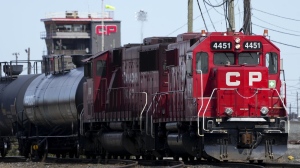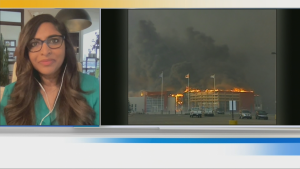A recent investigation by the Transportation Safety Board (TSB) has revealed that the railway cars involved in the Toronto derailment were not properly secured, resulting in the release of sulphuric acid.
The incident, which occurred on February 18th, involved a Canadian Pacific Railway train carrying 16 cars of sulphuric acid. The train derailed near Dupont Street and Bathurst Street, causing a major disruption to the surrounding area.
According to the TSB, the investigation found that the train’s handbrakes were not applied properly, leading to the cars rolling away and derailing. This resulted in the release of approximately 1,200 litres of sulphuric acid, which is a corrosive and potentially hazardous substance.
Fortunately, there were no injuries reported as a result of the derailment. However, the TSB has raised concerns about the lack of proper securing procedures for railway cars carrying dangerous goods.
In response to the investigation, Canadian Pacific Railway has stated that they are taking steps to improve their safety protocols and ensure that all railway cars are properly secured in the future.
The TSB has also recommended that Transport Canada review and update the regulations and guidelines for securing railway cars carrying dangerous goods.
This incident serves as a reminder of the importance of following proper safety procedures in the transportation of hazardous materials. The TSB’s investigation highlights the need for continued vigilance and improvement in the railway industry to prevent similar incidents from occurring in the future.
As the investigation continues, the TSB will provide updates on any further findings or recommendations. It is crucial that all parties involved take the necessary steps to ensure the safe transportation of dangerous goods in our communities.




